Qantas flight emergency emergency: ‘Takeoff felt wrong’
Passengers onboard Qantas flight QF520 have described a ‘loud bang’ upon takeoff and the aircraft ‘bouncing up and down’ before it landed at Sydney after a suspected engine failure | SEE THE ENGINE DAMAGE
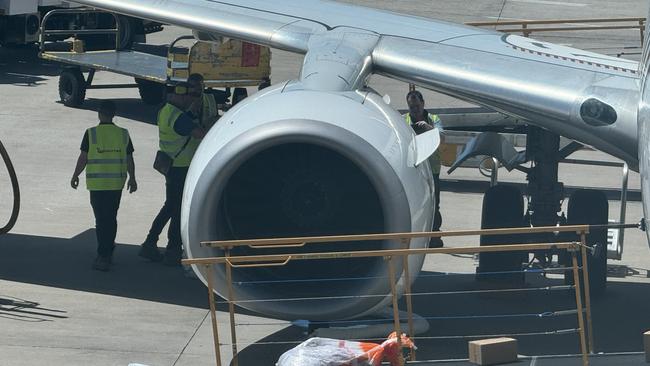
Passengers onboard Qantas flight QF520 have described a “loud bang” upon takeoff and the aircraft “bouncing up and down” before it safely landed back at Sydney Airport after a suspected engine failure.
Authorities are investigating whether QF520’s suspected right engine failure then caused a grass fire near the airport’s parallel runway, which has caused delays across the day, compounded by an earlier tech outage.
Images on Friday afternoon showed smoke billowing from the apron of the international airport, in Sydney’s south.
Qantas confirmed flight QF520 experienced a suspected engine failure after takeoff and chief pilot Richard Tobiano said after circling for a short period of time, the aircraft landed safely at just after 1pm.
“Our pilots are highly trained to handle situations like this and the aircraft landed safely after the appropriate procedures were conducted,” he said.
“We understand this would have been a distressing experience for customers and we will be contacting all customers this afternoon to provide support.
“We will also be conducting an investigation into what caused the engine issue.”
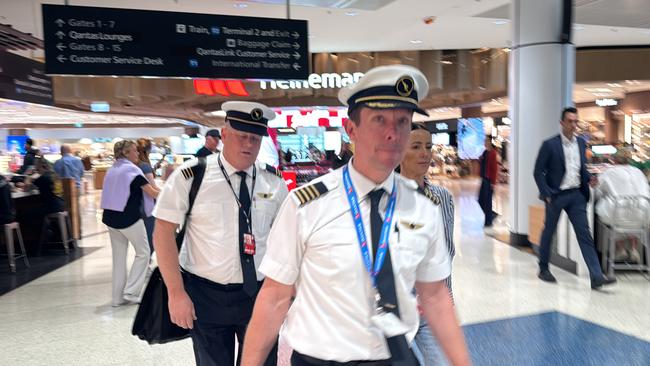
The aircraft involved is a 19-year-old Boeing 737, registered VH-VYH.
Qantas is in the process of renewing its domestic fleet but it could be years before new A321XLRs arrive, allowing the ageing 737s to retire.
Speaking to The Australian at Sydney Airport, passengers of QF520 described a loud “bang” upon takeoff before the aircraft started bouncing “up and down” while climbing.
“...The captain said ‘by the way, (an) engine has just failed’, and we all had to get prepared and put all the windows up,” passenger Ashleigh McDonald said.
“(The aircraft) kept circling and then everyone started to panic, we were shaking, I’m still shaking… It was actually really frightful.”
Ms McDonald said the Qantas staff were “wonderful” and that the captain had assured passengers the entire crew were well-qualified to deal with such emergency situations, adding that passengers had been told the right engine had failed.

She was travelling alongside friend Mieke Galvin – the pair were en-route to Brisbane for Ms Galvin’s 40th birthday celebrations – who said a fellow passenger had asked her whether the aircraft would “fall out of the sky”.
“So then I started to panic,” she said.
“It felt wrong, the takeoff felt wrong. And then when we landed we were told there was an oil leak and that we had to quickly get off the plane.”
Both women, however, said they appreciated the complimentary $15 gift card they’d received.
A Sydney Airport spokesman confirmed the aircraft had landed safely and that the main runway was operational. He said that investigations continued to understand if the grass fire and a possible engine failure were linked.
“Earlier today a Brisbane-bound flight made an emergency-return to Sydney Airport, landing safely just after 1pm,” the spokesman said.
“This departure of aircraft coincided with a grass fire along the eastern side of the airport’s parallel runway, which was brought under control by teams from the Aviation Rescue Fire Fighting Service.
“It’s not clear at this stage if the two incidents are linked and investigations are continuing.”
The Sydney Airport spokesman said a full inspection of the airport’s parallel runway was ongoing “to return it to service as quickly as possible” and passengers should “expect delays”, urging customers to check with their airline for the status of their flight.
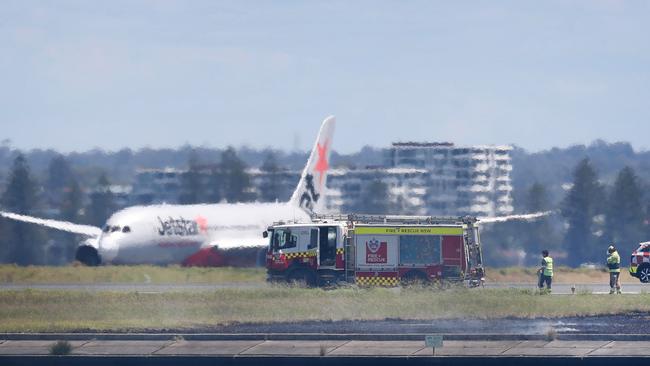
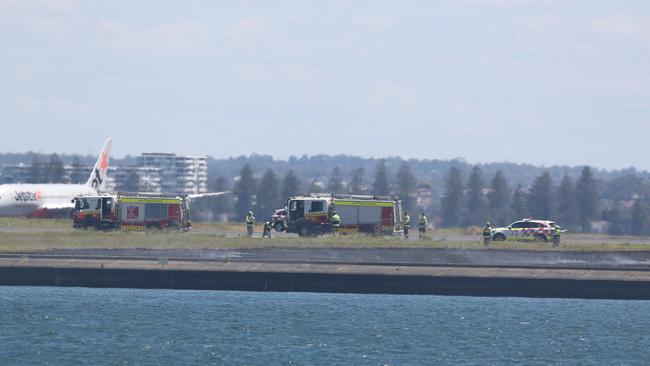
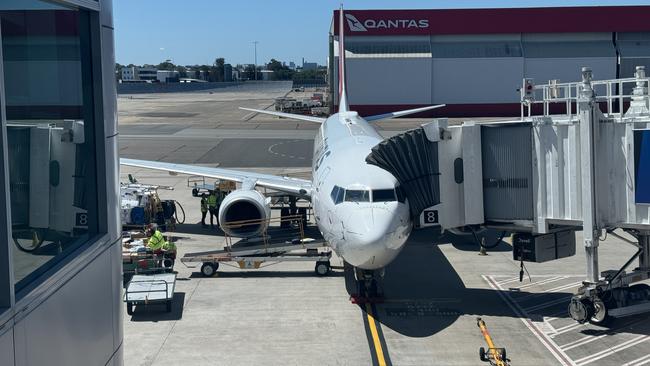
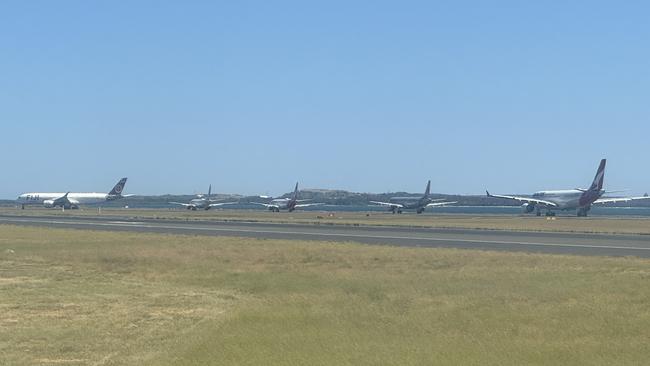
A Boeing 737 pilot said for an engine to fail at the most critical point of take-off was not ideal but it’s something they trained for every time they got into the simulator.
“It would’ve made the guys’ life very exciting and they’ll be very glad to be back on the ground but in terms of the novelty of the failure it’s something we train for all the time,” the pilot said, speaking on the condition of anonymity.
He said the loud “bang” heard with the engine failure typically amounted to a component within the engine “letting go”.
“Obviously the engines are spinning at a very high revolutions per minute, so even a small part letting go makes a lot of noise followed by vibration,” he said.
Our landing at Sydney airport was aborted by a grass fire next to the runway. Have the fire crews something to do. pic.twitter.com/EbTwYD6ZGV
— Nigel Withers (@MajorBlipvert) November 8, 2024
Boeing 737-800s are certified to takeoff on one engine, he said, but it’s then on the pilots to work through their checklists and get the aircraft safely back on the ground.
“If there was a fire associated with the engine, then you run that part of the checklist which puts the fire extinguishers into the engine to put the fire out, secure the engines, run the checklist, which is what they would’ve been doing as they were circling,” he said.
“While they’re in that holding pattern doing those sort of racetrack patterns, they’re going through the checklist, they’ve put themselves in a safe place, away from built up areas right at the start of where they’ll actually be commencing the approach to land.”
The Australian Transport Safety Bureau announced it had begun an investigation and quarantined the aircraft’s cockpit voice and flight data recorders.
That would likely include interviewing the flight crew, reviewing operator procedures, analysing weather information, examining any relevant engine components and potentially attending any tear-down inspection of the engine.



To join the conversation, please log in. Don't have an account? Register
Join the conversation, you are commenting as Logout